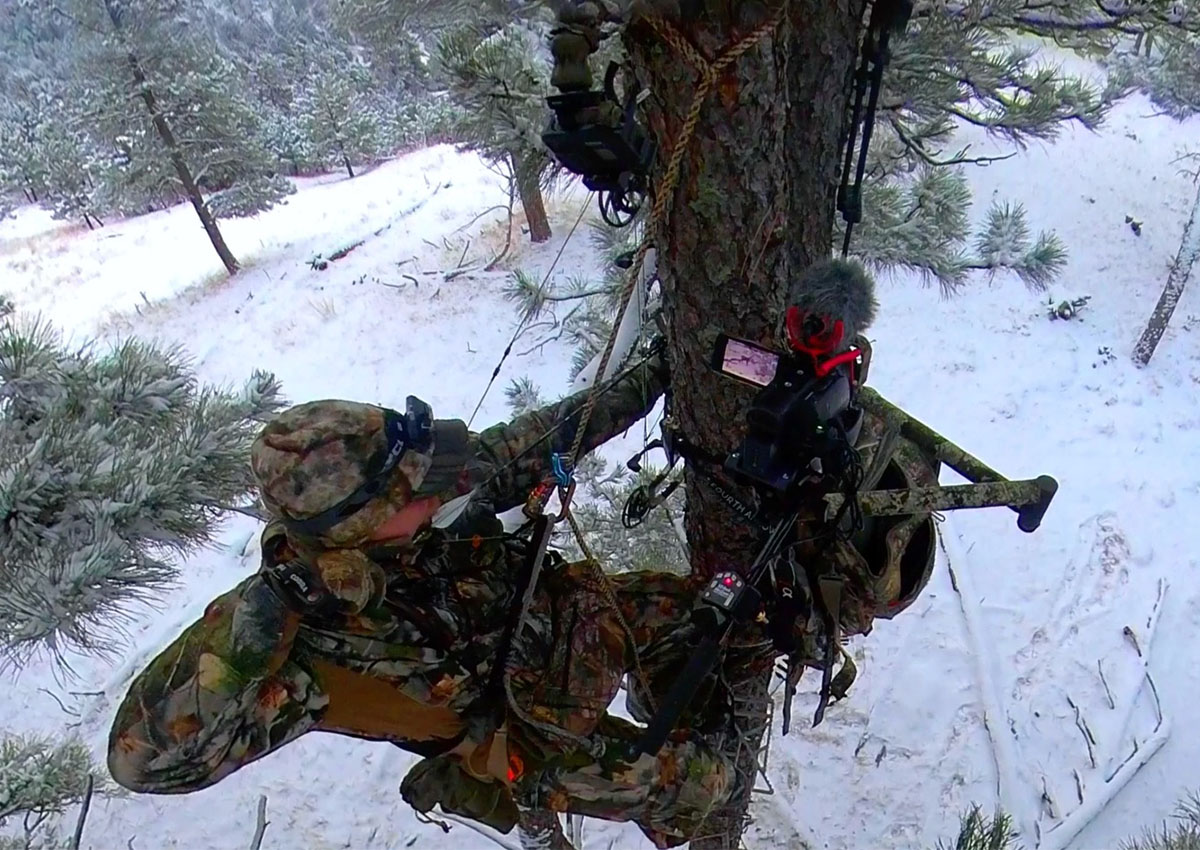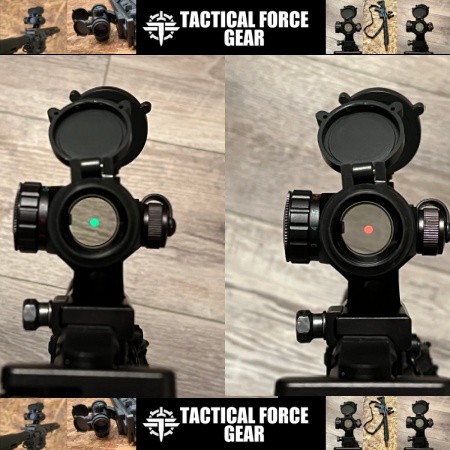For diehard deer hunters, November is the most wonderful time of the year. This month, thanks to the whitetail rut, brings some of the best hunting action known to man. Millions of hunters across the country will spend millions of hours in the woods this time of year, hoping to cross paths with giant whitetails. Knowing how to rattle in a buck could be the key to luring a shooter into range.
But perfectly imitating bucks to attract a real one isn’t as easy as the pros on the hunting shows make it seem. Getting it right has high stakes. Mess up, and you could spook deer. Thankfully, knowledge is power, and there’s been plenty of research into exactly how to rattle in a buck.
What Rattling Sounds Like
Rattling is a calling technique that mimics the noise of two bucks fighting. During the rut, bucks experience a surge of testosterone that increases aggressiveness and fuels sometimes-violent battles for dominance and breeding rights.
I heard my first buck battle when I was a teenager sitting alone, 18 feet up a swamp oak, in a rickety homemade treestand. It was barely shooting light when the first sound waves hit my ears, and my imagination ran wild, conjuring images of BigFoot shuffling through the leaves in flip-flops while chomping on a plastic Pepsi bottle.
Of course, the sound was actually made by two bruiser bucks shoving each other around just out of shooting range. Unfortunately, when those first rays of morning sunshine hit the creek bottom, both seemed to evaporate into thin air. Even though I didn’t get a clean shot that morning, the experience left my heart racing for the rest of the morning.
I’ve tried to recreate the sound of that mayhem on numerous occasions, but I’ll admit that I haven’t had much rattling success. I decided to look into what science says about how to rattle in a buck before pulling out my rattling bag this deer season.
The Science of Rattling
Instead of fumbling around in the woods trying to rattle up bucks as I did (like Sasquatch jacked on caffeine) Dr. Mickey Hellickson, the chief wildlife biologist for the King Ranch in southern Texas, teamed up with researchers from the renowned Deer Lab at the University of Georgia to conduct a 3-year study to determine what types of rattling sequences were best for attracting big bucks.
Their research took place on Welder Wildlife Refuge in San Patricio County, Texas, an area where the whitetail population is plentiful, the buck-to-doe ratio is well-balanced, and plenty of middle-aged and mature bucks roam around. The area also featured multiple 10-meter observation towers, which provided excellent visibility for observing how bucks reacted to the researchers’ rattling strings.
The team also conducted research on Faith Ranch, located in Texas’ Wester Rio Grande Plain region. There, 48 bucks were outfitted with activity-sensing radio transmitters to gauge their responsiveness to rattling sequences.
Researchers rattled 171 times during the pre-rut, post-rut, and peak rut in November and December. Researchers had a 65 percent response rate with 111 bucks responding.
Hellickson used four different sequences during his research. “Short and quiet” and “short and loud” patterns were performed in 10-minute segments with one minute of rattling followed by nine minutes of silence. “Long and quiet” and “long and loud” routines used three minutes of antler banging and seven minutes of silence.
Rattlers kept their elbows close during quiet sequences to prevent overly loud antler clashes. Loud sequences followed a more no-holds-barred approach that included heavy antler impact and incorporated rubbing bark, breaking branches, and scraping the ground to replicate aggressive buck combat.
If you would rather spend your time in the woods rattling up swamp donkeys than slogging through pages of boring scientific research, don’t worry. I did it for you. Here are the key takeaways.
When Should You Rattle?
Hellickson’s research suggests that bucks respond at a higher rate in the morning than at other times of the day.
Researchers were also able to rattle up more bucks on cool and overcast days with little to no wind. During testing, buck response to all rattling sessions increased as wind and temperatures decreased. The action also ramped up as cloud cover increased.
The wind certainly affects a deer’s ability to hear, so it’s easy to extrapolate that the sound of rattling antlers clanking together will carry farther in calm conditions. It is more difficult to understand how cloud cover affects response rate. It’s possible cloudy days affect a buck’s visibility due to less glare, or perhaps a lower barometric ceiling affects how well that big boy’s ears pick up the sound. Fortunately, we don’t have to understand the why — just the how. Bucks responded more to rattling sessions on days when cloud cover was more than 75 percent.
Where the deer are in the rut cycle also affects their response to rattling. Hellickson’s crew discovered that more bucks responded to rattling during the rut. Researchers had at least one responding male during this phase for every session. Young bucks were more responsive during the pre-rut, while 3 ½- to 4 ½-year-olds were more reactive during the rut.
Where Should You Rattle?
Rattling from an elevated position makes it easier to spot approaching bucks. Hellickson’s crew rattled in two-person teams, one watching from an observation tower and one positioned on the ground. Ground-level team members failed to see 57 percent of the responding bucks. Since rattling in a buck won’t bring much success if you can’t see him, climbing high is just a smart strategy.
It’s also critical to pay attention to wind direction and keep your eyes peeled on the downwind side of your stand. Researchers discovered that bucks overwhelmingly responded on the downwind side of the rattling. Also, when they rattled to collared bucks, most initially circled downwind to investigate, even if they circled back to approach from their original direction.

How Loud Should You Rattle?
Hellickson and his team performed 85 loud rattling sessions, which attracted 81 bucks. Quieter rattling sets were far less successful at pulling bucks, only drawing in 30 males throughout the study. Raucous sessions were nearly three times more effective for drawing in bucks than the more passive approach.
Hellickson believes the louder rattling sessions sounded more like a heavyweight fight, where two mature bucks were battling out for championship dominance and the breeding privileges that go along with it. He compared quieter rattling to two teenage boys engaged in a shoving match.
Think about it: Which fight sounds more worth grabbing some popcorn? A brawl between Mike Tyson and George Foreman or the schoolyard scuffle?
If you want to draw in a crowd, crank up the volume — the louder, the better.
How Long Should You Rattle?
Research results showed no difference between buck responses to the shorter and longer rattling sessions. However, Hellickson doesn’t recommend rattling for more than a 2 to 3 minute stretch. Whitetails have keen eyesight, and limiting the length of your rattling sets will help lower the odds of a buck spotting you slamming antlers together.
How Often Should You Rattle?
Hellickson and his team performed their rattling sequences in sets of three 10-minute sessions. Each three-part rattling session lasted about 30 minutes in total.
While the response rate decreased with each set (44 percent, 34 percent, and 22 percent, respectively), several collared bucks ignored the first set but approached when the caller started the second round.
Read Next: The Best Deer Calls of 2024
Don’t be too quick to throw in the towel if a buck doesn’t come barreling in on your first rattling attempt.
Final Thoughts on How to Rattle in a Buck
Although whitetails everywhere are similar, you can’t expect to have the same results as Hellickson’s team of researchers. Whether you’re hunting your own back 40 or local public land, the ground you’re hunting probably doesn’t have the same buck-to-doe balance or as many mature males as the wildlife refuge or private ranch where Hellickson conducted his research. Areas that have high buck-to-doe ratios see more aggressive rut behavior by bucks.
Even if you don’t call in a bruiser every time you rattle, if you climb into a treestand on a cold, clear morning and pay attention to the wind while you clatter away at top volume, you’ll increase your chances of seeing one.
Read the full article here




